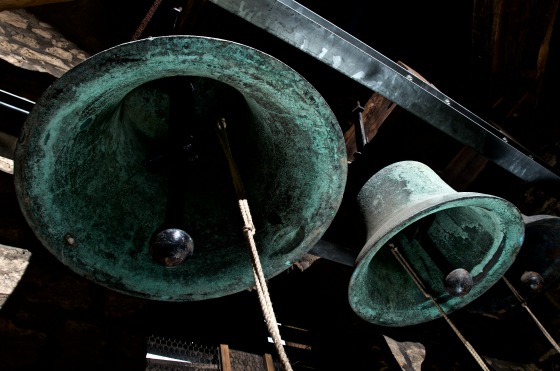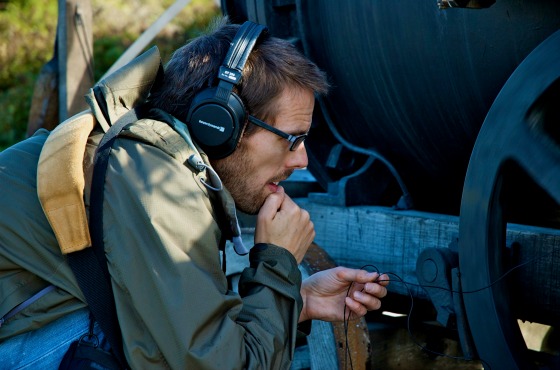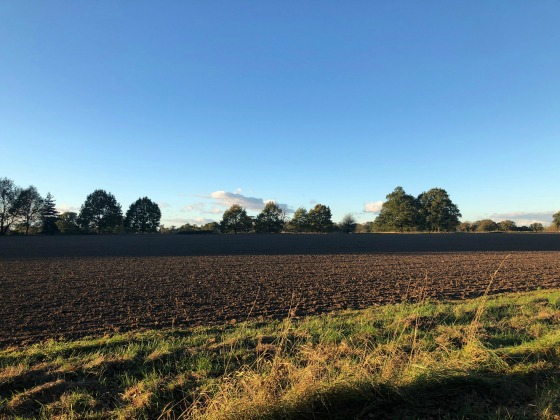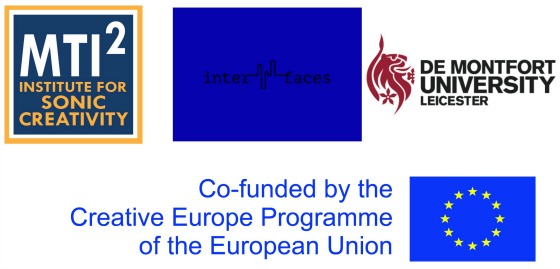Leicester’s St Nicholas Church and the Magazine are at the heart of unique music installations celebrating the city’s historic architecture.

The bells at St Nicholas Church
Four artists have created three extraordinary pieces of work incorporating an unusual mix of recordings, by working with experts from the Music, Technology and Innovation – Institute for Sonic Creativity (MTI2) at De Montfort University Leicester (DMU).
Architect Frances Crow and sound artist and composer David Prior - known as Liminal - centred their latest piece exploring bells and their relationship to culture on St Nicholas Church, Leicester's oldest place of worship dating back to 800AD.
They recorded eight parishioners reading creeds and combined it with the sound of the church bells to produce a 20-minute installation, which will be delivered through multiple speakers across the building including one located in the bell tower.

David Prior during a field recording
David said: “Our piece culminates with the voice recordings articulating the bells. We achieved this through a technique called convolution, which takes two sounds and makes them interact.
“We don’t always produce electronic work, but having access to the expertise and facilities at MTI2 has enabled us to give these parishioners a voice.”
Bristol-based composer and visual artist Kathy Hinde – who grew up in Quorn, Leicestershire - drew inspiration from the Buddhist bell that hangs on the first floor of the Magazine, a Grade I-listed building which was originally the main gateway of a walled enclosure built around 1400.
Her multi-channel piece is a product of recording environmental sounds through a microphone placed in the bell, capturing the distinctive sound of the bell resonating without striking it.

The Buddist bell that inspired Kathy Hinde's installation
“It reminded me of vocal tones and chanting, which chimed with the bell’s history of being used in meditation, so I transcribed the recording and worked with five singers to vocalise it,” said Kathy.
“The bell was looted from Burma during the 1880s and escaped being melted down for munitions over the years, so I wanted to give it a voice after 150 years of silence.”
RELATED NEWS
Discover music at DMU - attend our next Open day
DMU grad 'living the dream in New York' after setting up studio
Music Tech graduate credits DMU for helping her gain confidence to perform on a global stage
Joseph Young, a sound artist living and working in Brighton and in Berlin, will be presenting what he calls ‘an immersive sound journey’ on the top floor of the Magazine.
His work explores the legacy of King Richard III and how it relates to Leicester now, combining recordings from the Battle of Bosworth field, spoken word and electronic music.

The Battle of Bosworth field photographed by Joseph Young
He said: “My starting point is always listening because sounds, or absence of sound, tells us a lot about the place and time we live in. What’s fascinating about the Magazine is that it is cut off from the rest of its history, marooned in the present.”
All three installations are open to the public on Thursday 13 December (3pm-6pm), Friday 14 December (noon-6pm) and Saturday 15 December (noon-5pm), with no booking required.
Professor Leigh Landy, Director of MTI2, said: “The MTI2 is working at the cutting edge of making music in a variety of ways with any sounds. As sounds are part of our daily lives, the institute is highly active in introducing this type of creativity to the public at large, not just an elite audience.
“This is achieved through community projects and cultural activities in unexpected places. That is why we decided to create UK In Situ works based on IRCAM’s formula of creating site-specific artistic environments celebrating special historic architecture.”
Leicester is just one of five sites across Europe – including France, Germany, Austria and Greece - bringing new music to more than 5,000 people as part of a project called In Situ.
In Situ is coordinated by MTI2, in collaboration with IRCAM (Pompidou Centre, Paris), as part of DMU’s role in Interfaces - a £3.2 million project funded by Creative Europe to make innovative new music accessible to a wide range of audiences.

Posted on Monday 10 December 2018